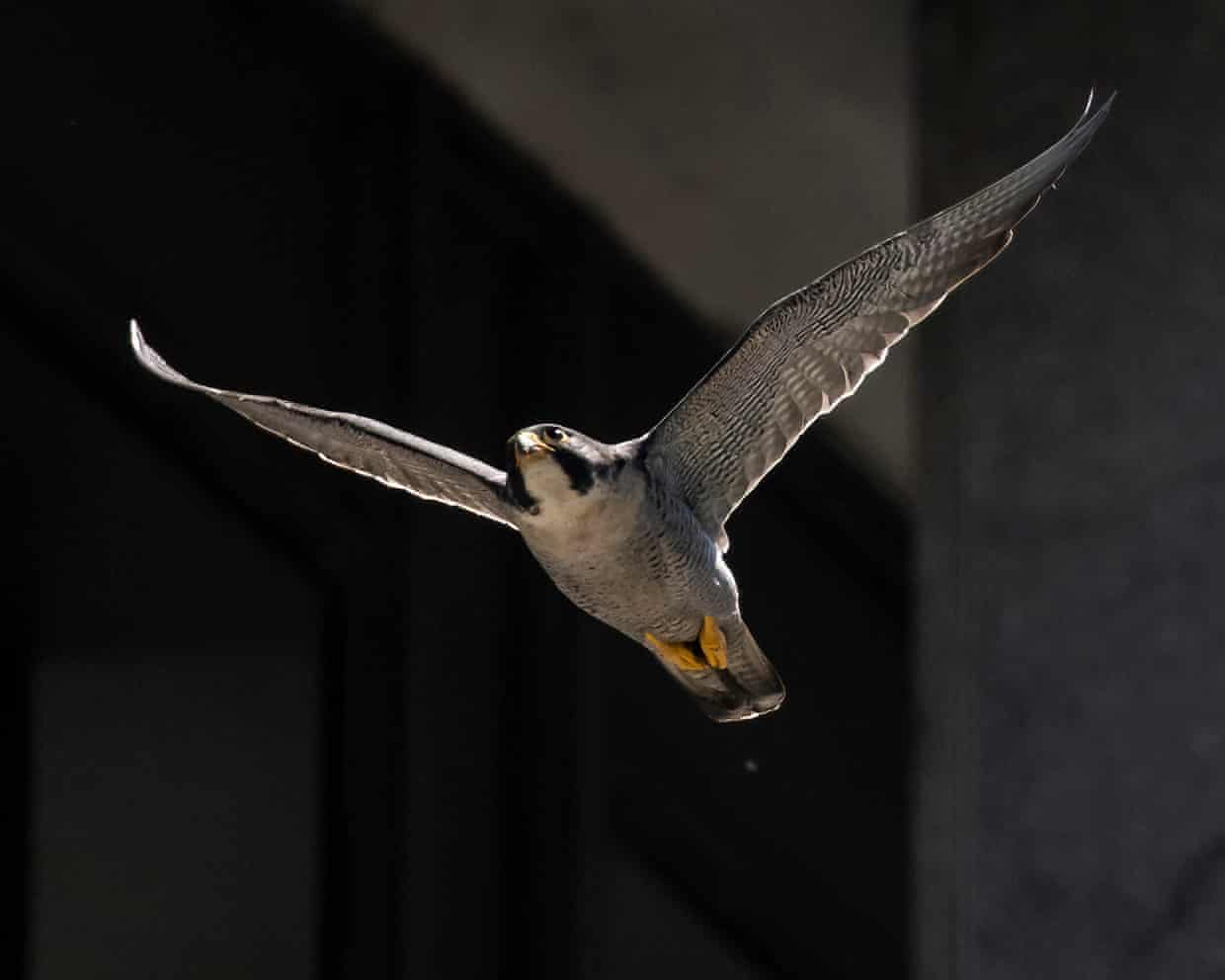As I made my way home from school, a flock of pigeons took flight from their resting spot on a nearby building. Suddenly, a peregrine falcon swooped down from above, resembling a shard of metal descending from the sky. As it leveled out from its dive, it collided with one of the pigeons, both birds disappearing from view, the pigeon surely succumbing to the brutal force of the impact. The only remnants of this encounter were a few small gray feathers floating down to the ground, a silent reminder of the falcon’s hunting skill.
This scene brought to mind a similar event from several months prior. I had heard a loud noise coming from our balcony, and upon looking outside, I spotted a young peregrine falcon that had perhaps misjudged its landing and found itself at a loss. It quickly regained its composure and shook its wings, looking both frustrated and distressed. I watched intently as it successfully freed itself and flew back toward Canary Wharf.
I couldn’t help but speculate if this was the same bird—once awkward and inexperienced, now matured into a skilled predator.
In recent times, falcons have taken up residence in various London landmarks, including the Tate Modern, Battersea Power Station, and most notably, the Houses of Parliament. It’s remarkable how their numbers have bounced back since the 1950s, when a harmful agricultural pesticide known as DDT nearly wiped them out. Today, the modern structures of London’s skyline serve as their new cliffs and perches.
**Olivier, 14**
– Check out today’s other Young Country Diary entry by Oonagh, 11: ‘[The Night I Clicked With the Bats](https://www.theguardian.com/environment/2025/may/24/young-country-diary-the-night-i-clicked-with-the-bats)’
– Young Country Diary is published every fourth Saturday of the month. The [submission form](https://www.theguardian.com/environment/2021/aug/27/nature-lovers-guardian-young-country-diary-writers) is currently closed, but be sure to keep it handy, as it will reopen on Monday, June 2, for summer article submissions.

